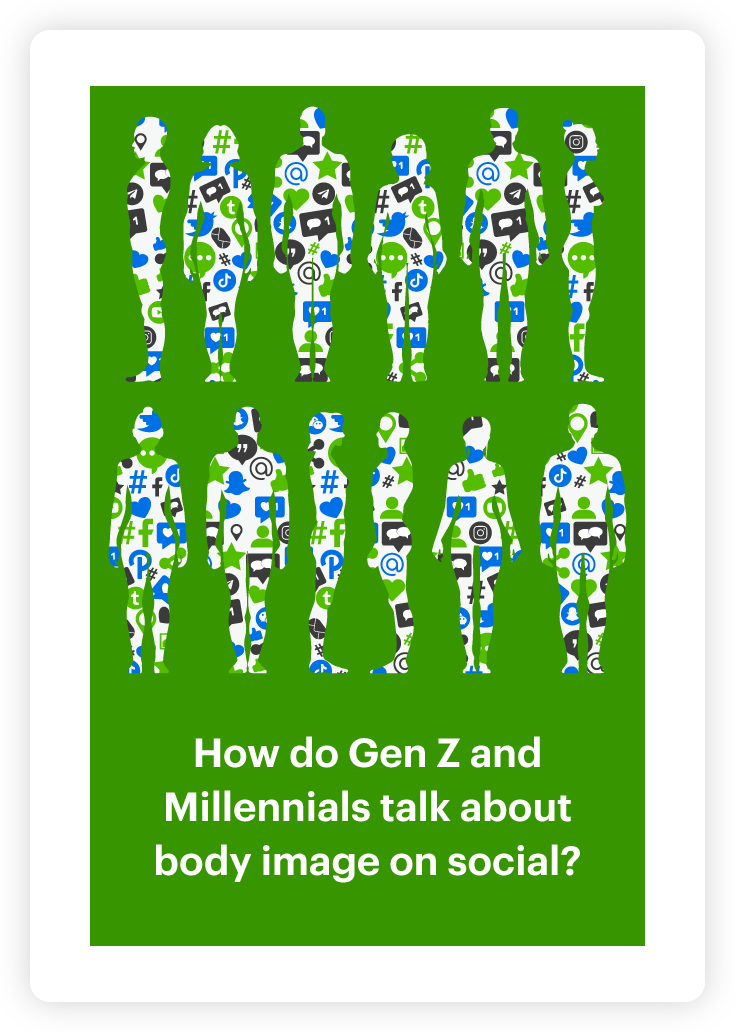Understanding global diversity trends and opinions

As the world evolves and society shifts gears, keeping a pulse on global opinions about macro-level social issues such as diversity is becoming increasingly important.
With so many factors contributing to differences in perceptions and beliefs, it should come as no surprise that the way people speak about diversity varies between countries. Opinions on diversity and diversity trends are formed through our lived experiences, misconceptions and biases which can take time to overcome.
Using social insights to understand opinions on diversity
To find out how diversity trends and opinions differ across the world, we used Relative Insight’s text analytics platform to analyze tweets from five English-speaking countries – the US, the UK, Canada, New Zealand and Australia.
Plotting social listening data from each country on a Heatmap, we could see where the conversation on diversity was most and least different. Our analysis revealed that the conversation was most different between the US and Australia, the US and New Zealand and the US and the UK. Using Relative Insight Explore, we delved into each pair of countries further.
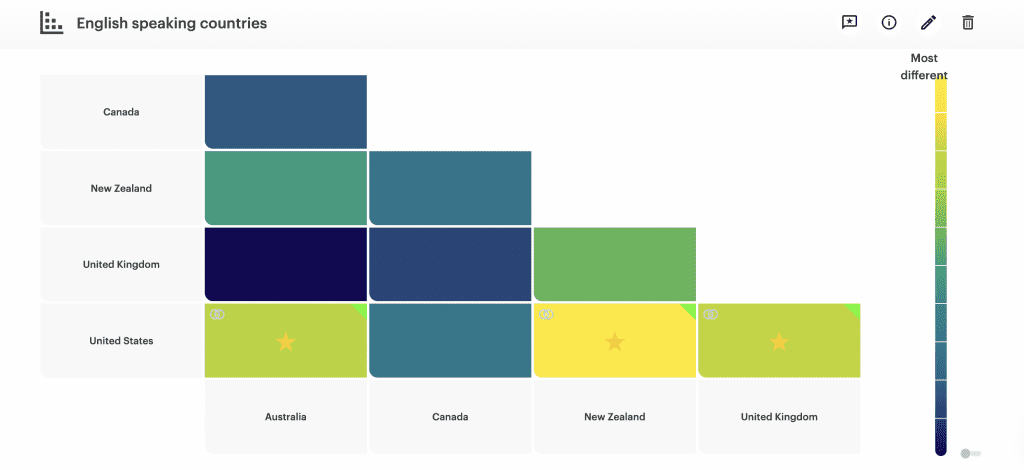
Diversity trends: Different types of diversity
An overarching theme revealed by our analysis was that each country has a different focus which over-indexes in conversations on diversity.
For instance, in the US, the conversation on diversity is 9.1x more likely to center around race than in the UK. Americans talk about white supremacy, civil rights and marginalized groups highlighting the effect of an oppressive history on attempts to move towards a more diverse and inclusive society.
Tweets from US audiences also mention systemic racism as a reason for a lack of diversity in areas such as government and employment. Phrases such as affirmative action and diversity hire are also more prevalent, although opinions on this trend appear to be conflicting. Some Twitter users see diversity hiring as a positive process. Others, however, see it as reverse discrimination. In both instances, the terms are highly politicized and point to a wider societal issue.
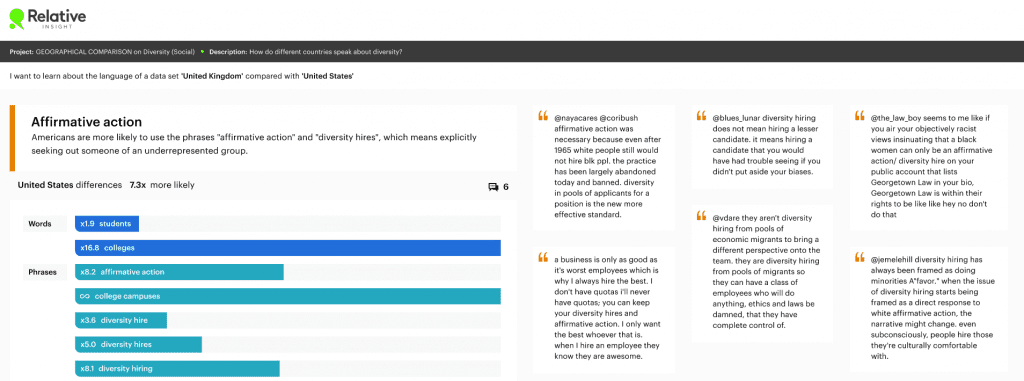
In contrast, British conversations on social media are 3.2x more likely to focus on representations of people living with a disability. The general opinion of British audiences is that when it comes to diversity, disability is often overlooked. Brands, advertisers and entertainment companies in the UK should take note and aim to create more content featuring people with disabilities.

When comparing tweets from the US and New Zealand, a standout diversity trends insight is that Kiwi audiences are more likely to centre their discussions of diversity around indigenous peoples. New Zealanders talk about indigenous and Maori representation, and the importance of giving a platform to diverse voices. In terms of dealing with the impact of colonialism, New Zealand are leading the way on reparations for indigenous peoples. Clearly, this is a facet of diversity that is of vital importance for New Zealanders.
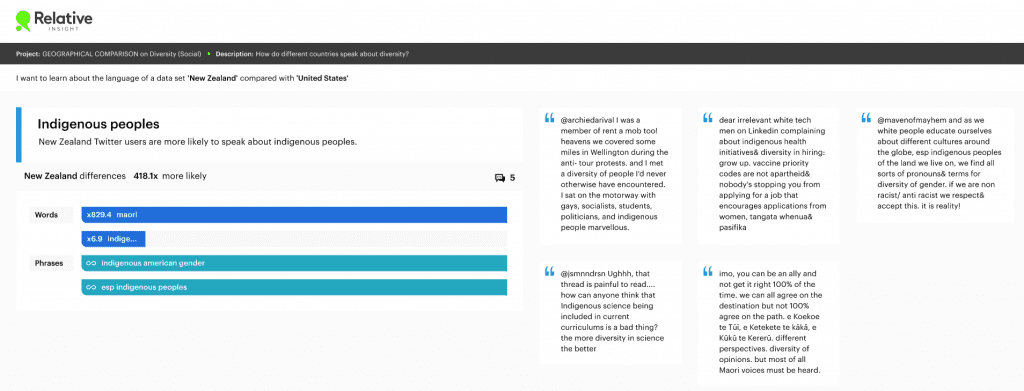
In 2020, research by Deakin university found that 75% of television presenters, commentators and reporters in Australia were from an Anglo-Celtic background, highlighting the lack of diversity in the media. We found that media diversity was still a hot topic amongst Australian audiences, appearing 82.2x more in this data set. The narrative around Australian media emphasizes its failure to properly represent Australians. However, social discourse reflects a commitment and need to increase representation – a key audience insight for media outlets.
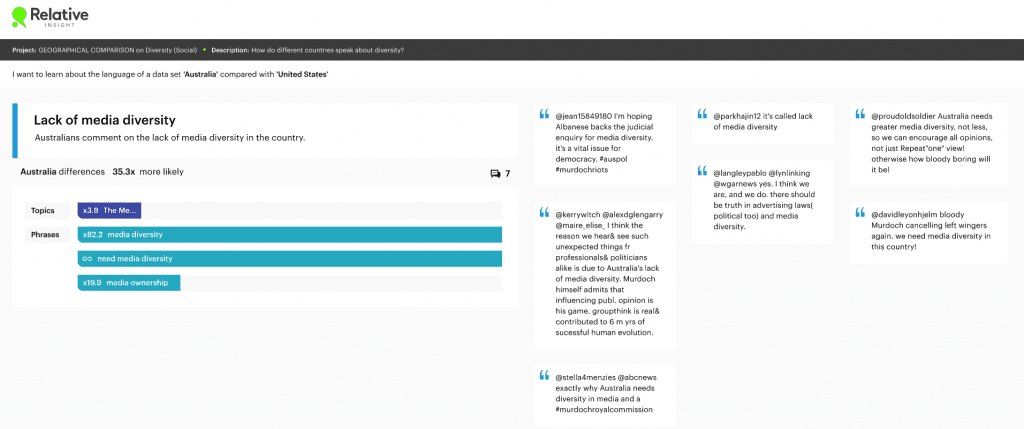
Sports
Another theme we identified across both UK and US tweets about diversity was representation in professional sports. The American conversation on diversity trends in sports focuses largely on the lack of diversity amongst head coaches in both the NBA and NFL. Similarly, the social commentary in the UK pivots around the underrepresentation of BAME athletes in professional sports.
Naturally, words such as football, cricket and F1 are more common amongst British audiences, whereas NBA and NFL over-index in US conversations. While these words understandably appear as linguistic differences in the platform, it’s clear that both audiences recognize the importance of diversity in sports. Sports provides a platform for social change, as we have seen with Marcus Rashford’s campaign to end child poverty, and both UK and US demographics believe more could be done.
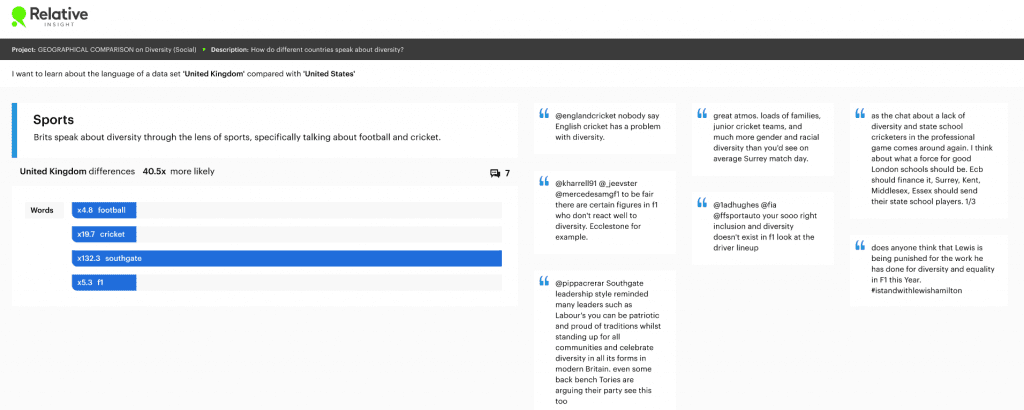
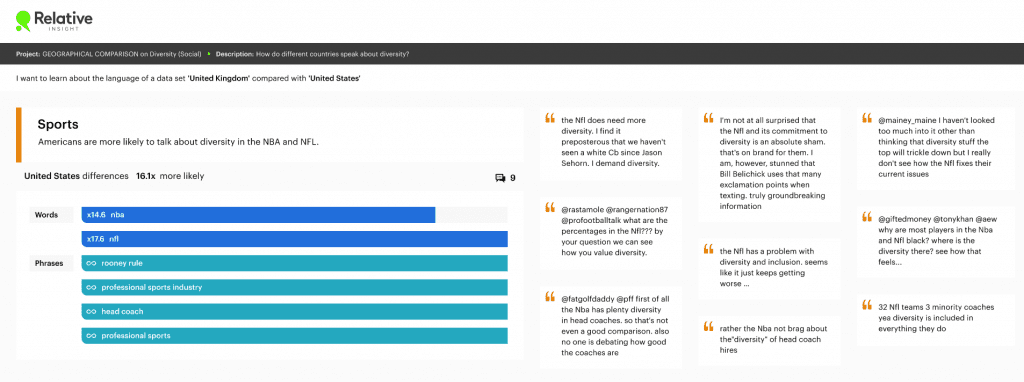
On-screen representation
Throughout our analysis, the idea of on-screen representation surfaced in social conversations of American and British audiences.
In contrast to Brits, Americans commented on representation in movies and Hollywood, speaking about how the industry could continue to improve its practices and diversify portrayals of body types, race and characters. In recent times, Hollywood has come under scrutiny for failing to represent diversity trends, both on-screen and off-screen. As the industry looks to implement changes, tracking sentiment towards Hollywood could help entertainment companies keep a pulse on opinions as they continue to evolve.
When we look at the conversation in the UK, rather than discussing representation in movies, Brits speak of diversity in adverts and various UK programs such as Love Island and Strictly Come Dancing. What’s clear is that viewers want to see diversity and are more engaged when programs demonstrate they are committed to being more inclusive (e.g. Strictly Come Dancing’s 2021 rebrand). Similarly, Brits are equally aware when a program (such as Love Island) significantly misses the mark.
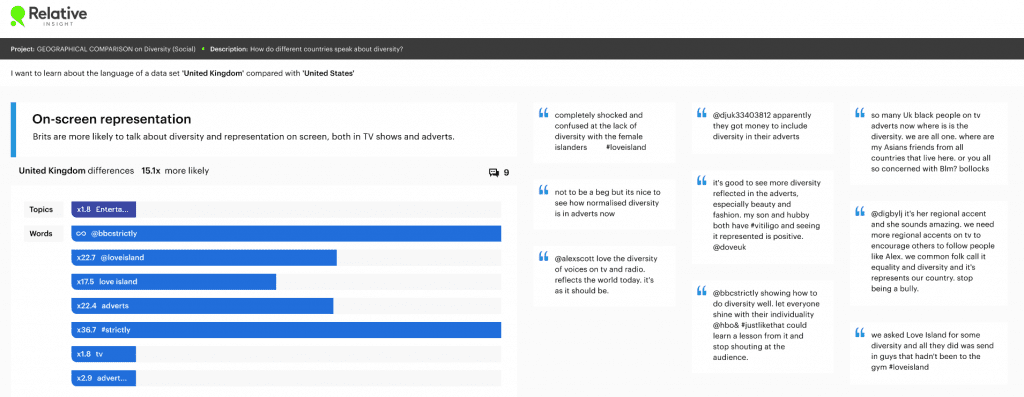
Why does this matter?
Diversity is a word that means a lot of different things to different people. Analyzing conversations from different countries can help organizations understand and act on the differing expectations of consumers and pinpoint diversity trends. Our analysis makes it clear that a one size fits all approach will not work for organizations wanting to authentically contribute to social change. Instead, they need to tailor their diversity strategies to reflect the unique viewpoints of their differentiated target audiences.
Relative Insight’s discovery-based approach to text analysis enables brands to get an objective view into qualitative data to truly understand how to communicate with different demographics. If you’re interested in finding out more, get in touch to arrange a chat with one of our experts.
